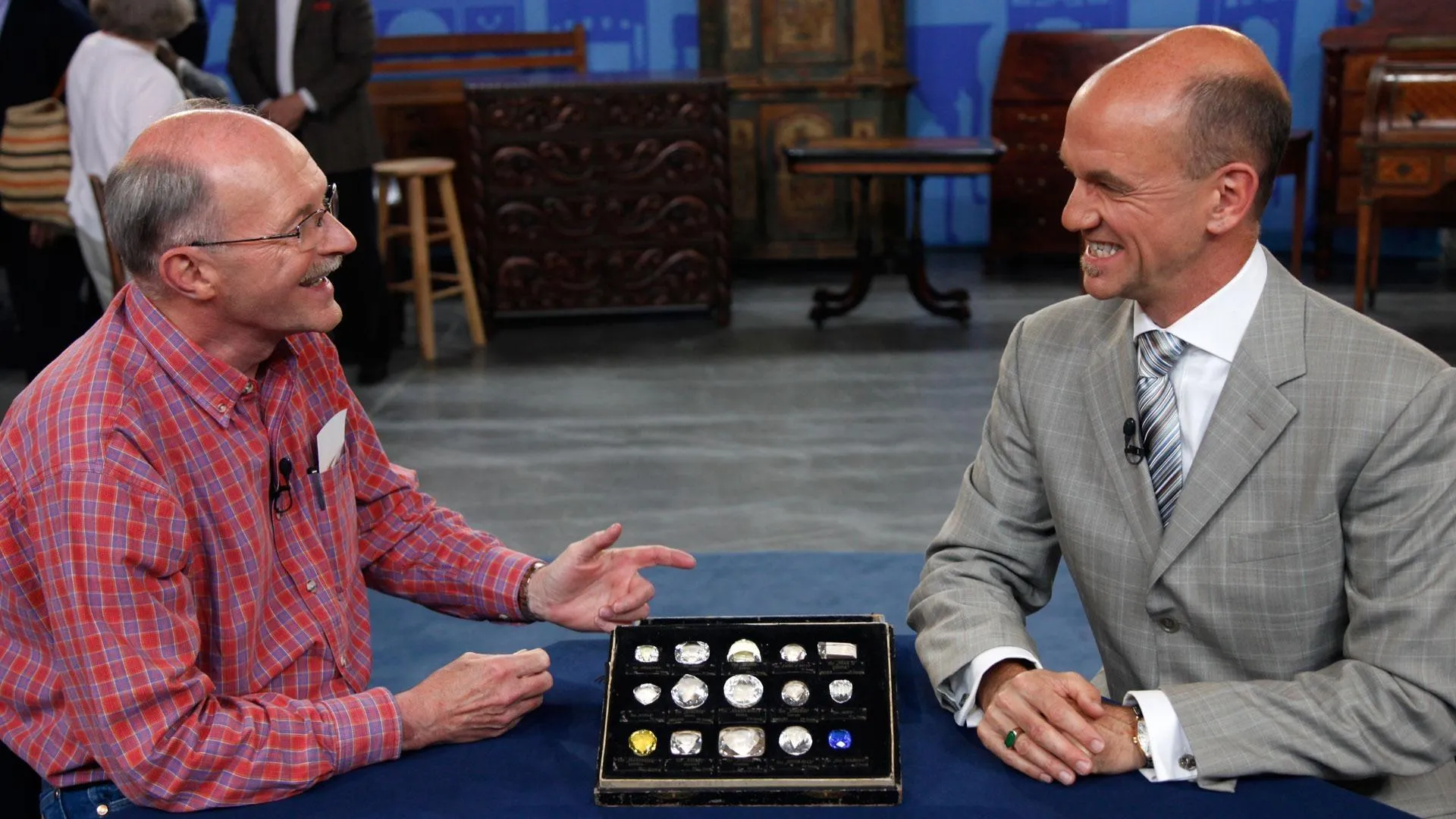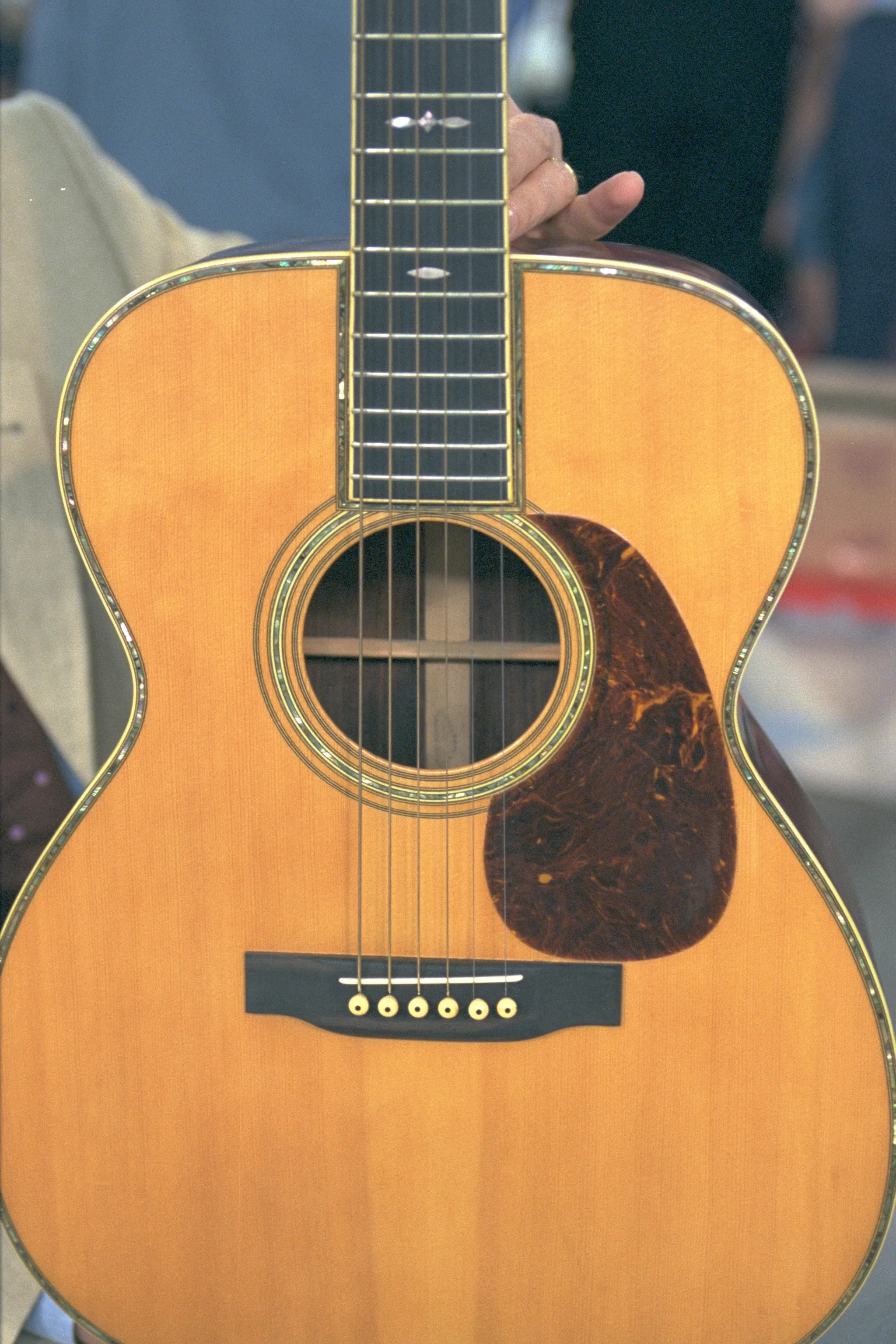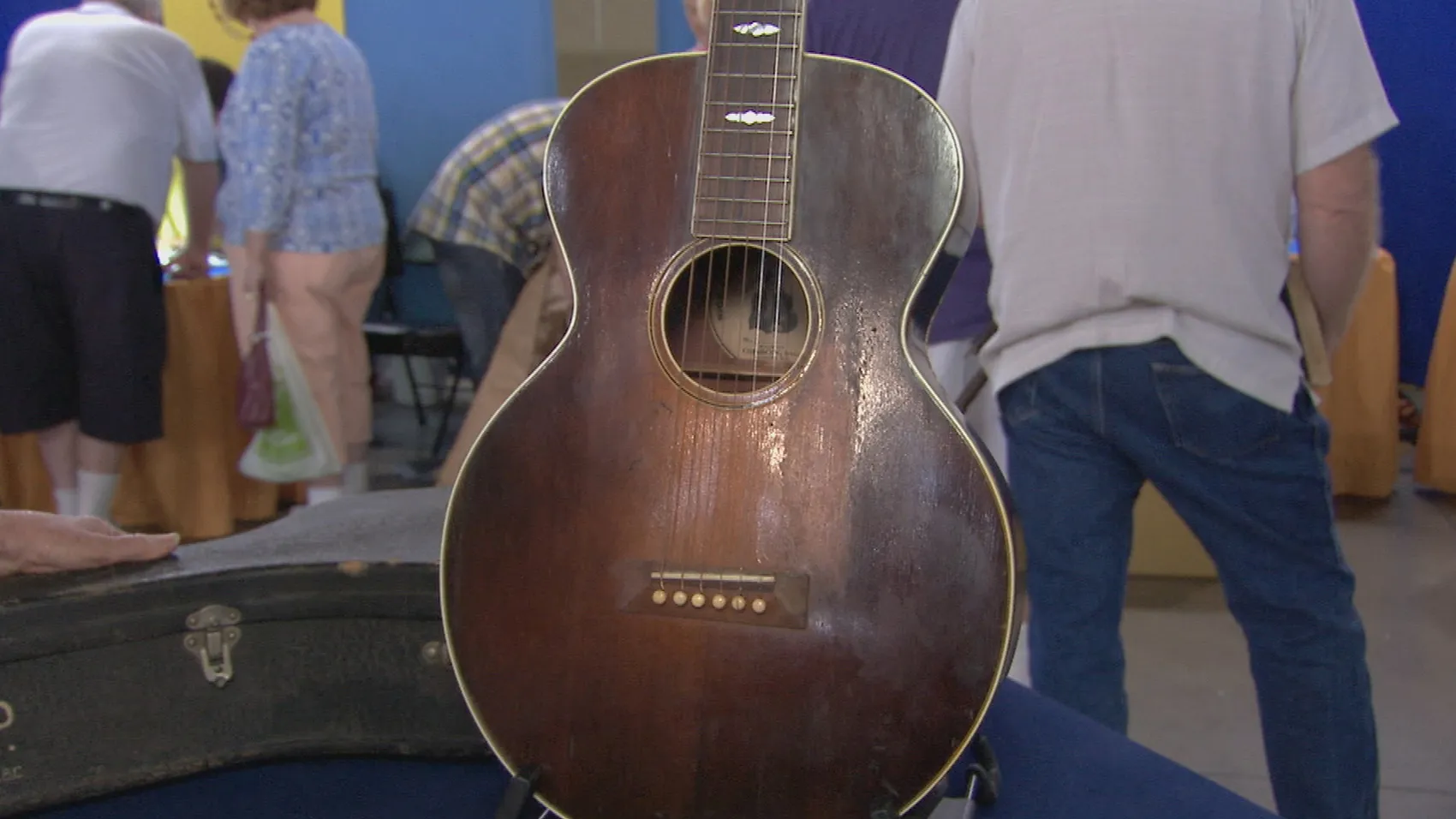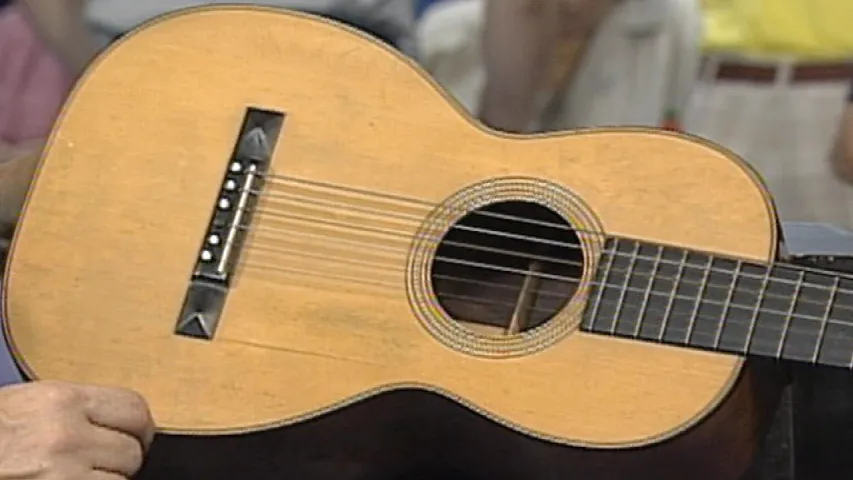GUEST: We have neighbors that are bachelor ranchers that live just down the street from us. And one of the bachelors just passed away and the other one was trying to go through things and he brought this over for us. These guys have had this in the family for many, many years. It belonged to their father. And he was raised in Willmar, Minnesota. And then they came to Montana probably around the 1920s.
APPRAISER: Well, what you have is a very early example of an attempt to make the guitar louder. The mandolin became very popular in the late 1880s and 1890s.
GUEST: I see.
APPRAISER: And the guitar was used to accompany mandolins, but as you can imagine, especially if you had two or three or more mandolins, a typical gut string guitar would just be drowned out because they have a very soft tone. And guitars like this, we see them really soon right after the mandolin became popular. Guitars start to get bigger, they begin to use steel strings. And, of course, that's an evolution that continued for decades. The maker obviously had training in violin making. Like the F holes are very well done, just like they would be in a fine violin. Guitars usually have binding that goes along the edge.
GUEST: Yes.
APPRAISER: Violins have purfling that's just inside the edge. And this is decorated with, actually, it's cello purfling that's done around inside the edge and then the spruce is on the outside of that purfling. Now the name inside is "F. Gaulke." And it says "1898." This was not something that was a one-off. In other words, this was not somebody tinkering in their workshop saying, "Well, let's just make a guitar with these big, fancy horns on the side." When you look inside, it's definitely production woodworking. This guitar does need some work, but it's very standard kind of restoration. And it wouldn't be too expensive. So, even in its current condition, for a guitar collector, partly because it would look fantastic on your wall or in your display case, but also because you could actually play it. You could play folk songs or, you know, anything on it. My guess is the retail value would probably be in the $2,500 range. Maybe a little bit above that.
GUEST: Wow. That's quite good.
APPRAISER: You know, maybe as much as $3,000 as much as a decorative piece.
GUEST: That's just wonderful information.











